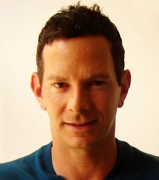Managing Conflict
 Tuesday, December 21, 2010 at 01:20PM
Tuesday, December 21, 2010 at 01:20PM Conflict is happening every day in our lives. Put simply, it is unavoidable. The real question is how do we manage through conflict? Or if we are managers or supervisors, how do we assist others in managing conflict?
The starting point is knowing exactly what conflict is, and what it is not. Conflict is a disagreement through which the parties involved perceive a threat to their needs, interests or concerns. It occurs when the goals or values between individuals are incompatible. This results in attempts to control each other with antagonistic feelings towards each other.
Conflict is not a mere disagreement. It is a situation in which people perceive a threat (physical, emotional, power, or status) to their well being. As such, it is a meaningful experience in people’s lives, not to be thought of as something that will just pass with time.
Above all else, we need to recognize that where there is a conflict, there is a problem.
Once we identify that a conflict is occurring, it’s helpful to know the sources of conflict. If we know the sources, then we might be able to address them and release the tension around the conflict.
A primary source of conflict is stress. Stress is the fuel for anger, which can result in conflict. If we can recognize that we, or others around us, are under stress and we can help alleviate that stress, conflict is less likely to hang around.
Another source of conflict is miscommunication. When miscommunication is occurring, clarifying where the goals and values of those involved in the conflict overlap can reduce the tension around the conflict.
Conflict can also arise from differences in individuals’ beliefs, values or ideologies of the ways of life. This can come up particularly with people who are different from one another in terms of ethnic, family, religious, and sexual orientation backgrounds. These can be some of the more difficult conflicts to resolve, because there are strong differences in values or styles that improved communication may not be able to address.
What are some other ways to resolve conflict, particularly if you have to engage in a conflict management discussion?
- Be clear what you and the other person (or those you manage) are trying to achieve. Focus on each person’s interests, concerns and goals and not his or her motives.
- Assess the situation and clearly define the problem. Define the problem in a way that does not place blame. Separate the problem from the people involved so that solutions can be generated. Also be aware that if the problem requires some specialized help (from a higher level manager, human resources employee, or perhaps a therapist), make sure to arrange for that person to assist or manage the conflict.
- Problem solve! Brainstorm to create new options that might resolve the disagreement.
- Implement a strategy and a time (several days or weeks later) to check-in to see how effective the strategy has been in addressing the problem and reducing the conflict.
- If you are a manager or supervisor facilitating a conflict management discussion, reconcile both sides; do not take one side or the other. Encourage each side to demonstrate empathy and mutual understanding when possible. Make sure everyone gets to speak. If someone is quieter than the other, make sure you create a safe space for them to voice their feelings. Encourage the use of “I” statements rather than “you” statements like “you need to…” or “you have to…” Discourage interruptions when someone is speaking. Discourage any personal criticisms or name calling. Above all else: make sure that everyone involved and present at the conflict management meeting agrees to work through the conflict to arrive at a solution. A conflict cannot be managed if those involved do not want to work through it.
Remember, conflicts are going to happen. It’s when we are able to step back and walk through some of the suggestions described above that we can reduce the conflict before it festers and continues to affect us, and those around us, over time.



Reader Comments (2)
Pierre Hardy’s shoes – Are You Prepared to Wear
What would you say at the first sight of seeing this picture? Will you ask if many shoes were abandon in a construction field? I think so in my first sight, too. But in fact, it was not a construction field. It was a fashion label boutique. Saying that you might know whose boutique it was because it was with such distinguished styles. Yes, it was Pierre Hardy’s boutique.
Pierre Hardy was born and raised in Paris. He studied dancing while majored in fine arts in Ecole Normale Supérieure. From 1983 to 1990, he taught in The Theater School, Rue Blanche. In 1985, he worked as an illustrator for magazines. From 1987 to 1990, he worked as designer in Christian Dior and Hermes. In Dior, he designed women shoes collections and men’s shoes in Hermes.
In 1999, he established his own fashion label and named it after his own name. At the same year, he released his first Women’s shoes collection for the spring and summer. In 2002, he started his men shoes’ line and bag collection. And last year he was employed as the Creative Director of fine Jewellery division while running his own label. So until now, the main designs of Pierre Hardy were shoes and handbags.
He recently released his collection for the coming 2011 season. For every season’s collection, Pierre would create an image as reflection of the collaboration with M/M Paris. Next is the image of 2011 summer.
Image of 2011 Summer
I really do not understand what the Images mean. Let’s look at his shoes for 2011 summer, we may know a little about the meanings.
Men’s Shoes
Women’s Shoes
The styles of these shoes are very special, no matter the shapes or the match of colors. The lines of the shoes do not seem to be very smooth but a little hard-shelled. That was Pierre Hardy’s styles. It seems to be constructing a building while designing a pair of shoes. The style was different and cool. Are you prepared to wear a pair of shoes like these?
I really replica panerai watches
enjoyed this post. You replica omega watches
describe this topic very well. I really top grade omega constilation replica
enjoy reading your blog and I will definitely bookmark it! Keep up the interesting posts!wholesale franck muller watches